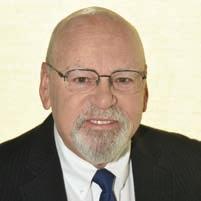
8 minute read
Free Play Rules FREE FREE
Frank Legato
It may seem like eons, but it was less than 20 years ago that casinos began to abandon the player reward system that had been in place since the late 1980s, when player tracking systems began to proliferate.
Advertisement
The system in which players earn points for all wagering through the machine spawned a variety of rewards, from themed special events to tournaments to a variety of gift giveaways. But eventually, the cost of providing those waffle irons, George Foreman grills and toasters did not, in itself, create a cost-effective player reward system.
Enter cashback. Each point earned would translate into a specific cash amount that was given back to the player, via those coin coupons practically all longtime casino enthusiasts remember. Many called them “bounce-back coupons,” because they required the club member to bounce back to the casino to redeem them for cash. Once back in the casino with the extra cash, operators reasoned, the player was likely to gamble again, theoretically giving that money, and more, back to the casino. As one famous slot-operator quote described the reasoning for the new cashback system, “You can’t put a toaster in a slot machine.”
But a funny thing happened to that plan. Spurned on by player-advocate newsletters like the Las Vegas Advisor—which had a special section on the best coin coupon deals called “Couponomy”—many of the most frequent and loyal casino customers would shop around for the best point-multiplier deals, earn coupons from several casinos, and go on periodic “coupon runs” to cash them all out, in most cases with the money simply walking out of the casino.
“Cashback was a particular vexing issue for casino managers,” says inter- national casino consultant Andrew Klebanow, principal of Klebanow Consulting. “Casino managers suspected that a portion of the money they handed to customers at the casino cage was walking out the door. They wanted a system that at least gave them a shot at winning ‘their’ money back. That drove the development of modules on casino management systems that issued non-negotiable dollars, better known as free play. A customer would have to cycle through their free play at least once through the machine before they could cash out their money.”
The era of free play began, and unlike cashback, free play required more play.
The Takeoff
Perhaps the largest factor leading to the rise of free play was a change under most regulatory jurisdictions in how free play is recorded. Historically, cashback appeared as a marketing expense, the same as free-room or restaurant comps. Today, the cost of free play is usually deducted from the total slot win to arrive at a net slot hold.
This accounting change allowed free play to become the preferred slot-club reward, and the method took off from there. Not only did it improve the balance sheet; it cost the casinos a lot less than comps.
Klebanow notes that the typical casino buffet or coffee shop operates at a loss, since it drives visitation to the casino.
“Typically, casino three-meal rooms price their menu to cover prime cost (the cost of food plus labor). That means other costs, such as supplies, linen, utilities, etc., are not covered by the price of the meals. So, the three-meal room operates at a loss, probably at 110 percent to 120 percent of revenue.”
Buffets, he adds, offer an even better illustration of the comp conundrum. “Most buffets are priced so that they do not even cover their prime costs,” he says. “It is not unusual for a $20 buffet to have a prime cost of $28-$30. Add in the other expenses (linen, supplies, utilities, etc.) and each meal sold costs the casino substantially more than what they charge.”
Thus, he says, it costs the casino a lot less to award a customer $30 in free play than a $20 meal comp.
Happily for operators, in addition to benefiting the bottom line, free play has been embraced by the players.
“Whether it’s points or actual bonus free play, either way comes out to the same thing—free play is free play,” notes Cliff Paige, slot director at the South Point Hotel Casino in Las Vegas. “It’s very extensive at South Point; it’s probably the No. 1 thing that our customers ask for. And one of the things we try to do is make sure we give the customers what they want.
“I don’t want to give stuff that they’re not going to use like a keychain or a bucket of candy or something like that. Free play is what they want. Free play is what we give them.”
“In the U.S., free play is utilized throughout the industry as a strong business driver in the marketing toolbox,” says veteran casino marketing professional Mary Loftness, who headed up relationship marketing at Station Casinos before founding her current consultancy, Profitable Customers, in 2000.

“When players of locals casinos are surveyed for their favorite player benefit or promotion, the results are overwhelmingly free play. Slot technology has improved to support additional methods of delivering free play. In marketing, the goal is to lengthen the time on device today, and/or incent another trip. There is now technology to automatically deliver that free play, but marketing communications must support this with immediate messaging.
“Free play is simple to deliver to the player, simple for the player to utilize and simple to track.”
“Free play is more of a bounce-back program that holds particular appeal in local/regional markets,” says Klebanow. “No one living in Denver is going to hop on a plane and fly to Las Vegas or Reno because they have a $50 free play offer in hand, but they will hop in their car and drive up the hill to Black- hawk to redeem that offer.”
Buddy Frank, owner of consultancy Slot Strategies and formerly a longtime executive who headed slot operations at several Reno casinos before moving to California—where he retired as slot operations VP at Pechanga—says that simple tracking of the free play expense is a key benefit to the operator.
“It has always ben difficult to measure the impact of various marketing incentives,” Frank says. “For example, did your entertainment offerings in your showroom result in more revenue, increased loyalty, more repeat visits, etc.? The same goes for comps and F&B offerings. Better than other options, free play offers the ability to accurately track both its utilization and its effectiveness.”
The Pitfalls
That’s not to say the method is without potential pitfalls.
“Free play is a wonderful and cost-effective casino marketing strategy,” says Frank, “but like many other programs, if your free play strategy is not applied with proper and consistent analytics, it can be abused, ineffective and costly. Weak marketers can get in trouble with free play, just as they can with comps, bus charters and earlier cashback programs. Better operators are using good analytical tools like QCI or GamingAnalytics.AI to accurately measure the effectiveness of their free play programs.
“Have you measured your return on free play offers? Is the ROI respectable? This is critical. While unheard of a few years ago, many operators now report slot machine hold percentages with and without free play, as part of their calculations. There are several other important metrics to consider: Did free play increase visitation rates above normal? What was the non-free play spend associated with each free play offer? Are your free play decisions reviewed frequently enough to prevent abuse?”
“Return on free play must always be measured,” says Loftness. “If the property is not getting 3X, 4X or 5X return on free play, depending on the competitiveness of the market, the free play is being offered to the wrong segments of players and/or in the wrong amounts.”
“The percent of gaming revenue rebated back to customers in the form of free play has ebbed and flowed over the years as casino marketers sought to compete with other properties or fought for increased market share,” says Klebanow. “The problem is that free play has a direct impact on slot hold. When casino marketing starts issuing too much free play, it starts to drag slot hold down. To counteract that force, slot managers often have to increase their floor’s slot hold to maintain their floor PAR.
“In fact, when one asks a slot manager what their aggregate slot hold is, they will more often than not quote a slot hold net of free play. For a regular player who redeems all of their free play, they may be experiencing a slot machine experience that holds 6 percent while someone walking in off the street for the first time may experience a slot machine experience at an 8 percent hold. That can reduce their time on device by 25 percent. Not a good first impression.”
“At South Point, we’ve sort of found our sweet spot, but I think free play absolutely can be abused,” comments Paige. “It’s not a magic bullet. It’s not going to solve other problems that you may have, whether you’re not treating the customer right or it’s a service issue.
“I’ve seen it in the past where some casinos have overused it. You used to see the same thing with point multipliers. It used to be where you only saw point multipliers during certain holidays. Now everybody has a point multiplier and it’s almost every day, and it’s burned that method out. It’s kind of like a sale that never ends. I think you’re starting to see that with free play. So we’re very, very careful on how we deploy it.”
While free play is loved by players and operators in locals casinos and regional markets, executives in many of the big tourist-centric casinos on the Las Vegas Strip have come to view the method as a burdensome cost.
While several Strip operators declined to comment for this article, past comments have questioned the wisdom of giving away free play to transient customers who may visit once or twice a year. Many have commented that slot hold percentages have been kept high as a way to counter the expense of free play.
“(For tourist casinos), I think free play probably would be a waste,” says Paige. “That’s a destination customer, very time-constrained—a lot of other things pull the customer’s attention away. So I think free play would actually hurt them.”
Paige says that for this reason, free play is bound to decline in destination markets. “I wouldn’t see it growing on the Strip,” he says. “In fact, I’d see it definitely going the other way—whoever is using it on the Strip is going to come to the same conclusion. It’s not worth it in a destination market.”
As far as local and regional markets, though, free play is likely here to stay. “As long as it doesn’t become overused like point multipliers—if it is applied properly—I think it will scale and grow,” Paige says.
“Free play remains cheaper than food, so it will always be used as part of Strip vacation packages,” says Klebanow. “It is not going anywhere, particularly in the regional markets.”

“Free play could become even more important in the future as we drill deeper into the data,” adds Frank, “to provide even more meaningful ways to distribute it. Can we give it only to those who’ve been losing? How about on user-specific events—birthdays, favorite teams’ touchdowns, anniversaries, repeat visits?”
“We’re in the gambling business,” says Paige. “If a customer wants to gamble, what better tool can you find that entices them to say, ‘This is really a great game; I’m going to use my free play?’ It’s what players love.”
“Free play will continue to be a dominant driver in the marketer’s toolbox for as long as we want to reward additional play time to valued players,” says Loftness, who adds, “That means forever!”









